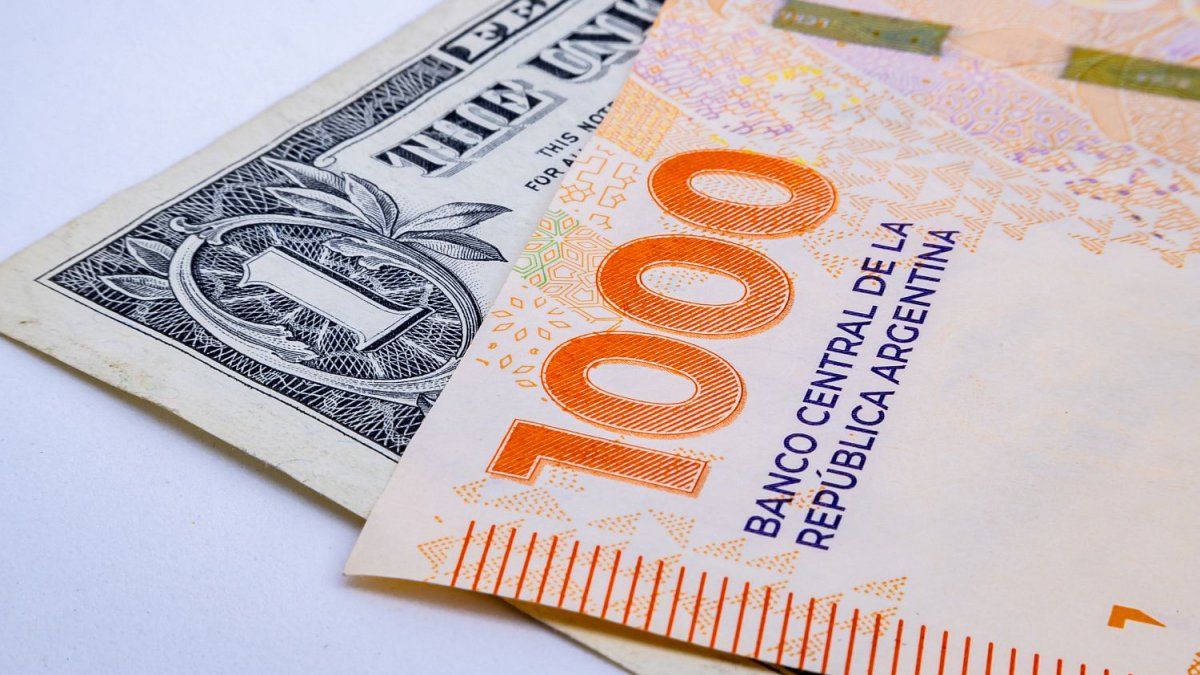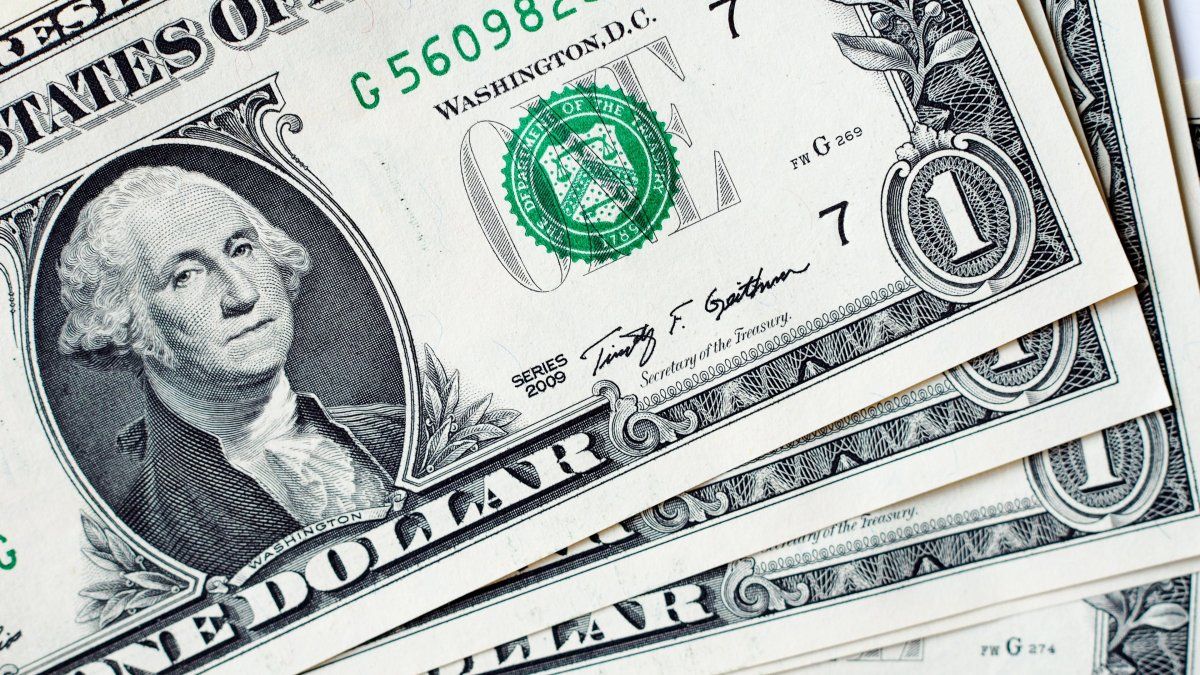If February inflation was 17%the accumulated value of the last 12 months would be 288.7% annually, the wholesale dollar ended at $842.3 and the devaluation rate in one year amounted to 327.2% annually, while the CCL dollar ended at $1,071, rising 192.4% in one year. This implies that there was deflation in official dollars of 9.0% annuallyand measured in CCL the deflation was 14.2% annually.
If we project these same numbers forward, and stand on our feet projections for the month of February 2025from our subjective point of view We expect inflation in one year to be 157.6% annually.he wholesale dollar would be at $1,760 and the devaluation rate would be 108.9% annually, this would result in a inflation in dollars of 23.3% annually.
Price of the dollar: the projection for February
The CCL dollar for February 2025 could be at $1,936 with a gap of 10%, It would increase 80.7% annually in one year, and inflation in CCL dollars would be 42.6% annually. With this inflation in dollar bills it makes no sense to leave the dollars stored in the safe, mattress or in the can in the pantry.
As can be seen we are at a turning point, stopped in the month of February, inflation for the last 12 months would be 288.7% annually, and looking 12 months ahead it is projected at 157.6% annually. Which clearly indicates that the future economy will develop at much lower rates than the current ones. The speed of demand will decrease, and we will have to change the way we do business.
The implicit interest rate of the future dollar is currently at 90% annually, the monetary policy rate at 100% annually, the fixed-term rate is 110% annually and loans are granted at rates that are around 120% annually.
If we transform these nominal rates into effective rates, how inflation is measured, The effective rate of the 12-month future dollar is 138.2% annually, and would be below expected inflation.
The effective rate of the fixed term would be 186.5% per yearand it would be a positive rate compared to an expected inflation of 157.6% annually.
The active loan rate is 120% annuallyIf we convert it to an effective rate it would be 213.8% per year, which would be much higher than the inflation rate at 157.6% per year.
Positive rates with respect to inflation
As we can see fixed-term interest rate and loan rates are highly positive against inflationThis leads us to think that if these positive rates continue, the dollar should continue to lose ground in the market. Furthermore, public securities adjusted for inflation should begin to show positive returns when they are trading at negative interest rates.
Such positive rates against expected inflation are not good news for the real economysince they will increase the recession already in force, leading to a very complex scenario for entrepreneurs.
In this scenario we could say that credit in pesos is very harmful to economic activity, while credit in dollars seems more beneficial. Rates in dollars are between 0.0% and 2.0% annually, If we estimate a devaluation rate of 108.9% versus an inflation rate of 157.6% in 12 months, the dollar credit looks more competitive. The problem is that not all economic agents have access to this financing, only those who are in the export chain.
Conclusions
- The Government should lower the interest rate to reactivate the economyIf it does not do so, it would leave economic agents out of the reach of a credit that helps rebuild their finances, since, to the sales problems in the market, we add a credit that is expensive and does little to help companies.
- If the Central Bank lowers the interest rate from 110% per year to 90% per year, the effective rate would be lowering to 138.2% per year. which would be below the inflation rate that we project at 157.6% annually. This could result in a more reasonable lending rate for the entrepreneur.
- It is true that in an economic scenario with fewer regulations the interest rate has to be positive against inflation, however, in this situation it could be harmful for the economy to recover. On the other hand, We should go to an economic scenario where the rate is set by the market and not the Central Bank.
- In this context We do not recommend borrowing in pesosmany economic agents measure the current rate in pesos against past inflation, they are making a serious error, it must be measured against probable future inflation.
- For those who are in the export chain, as is the case of the agricultural and livestock sector, it is more convenient to take financing in dollars than in pesos. This is part of the structural changes of an economy that went from the silver plan to the no silver plan. We should not rule out a dollar below $1,000 at current interest rate levels.
Source: Ambito




